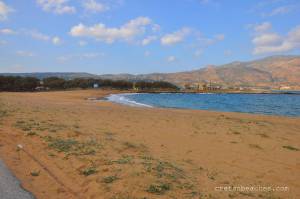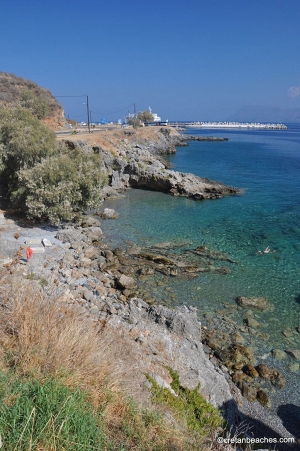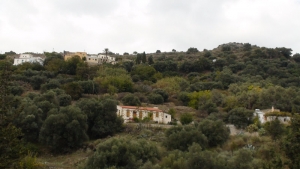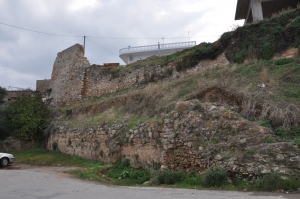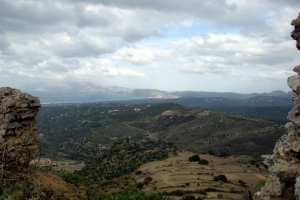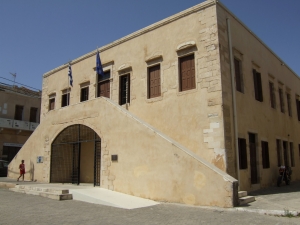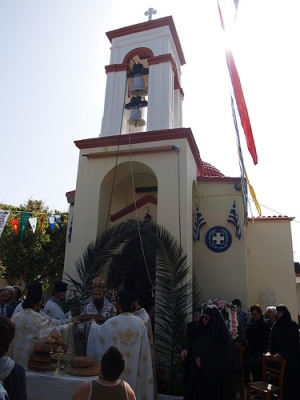Kissamos (or Kastelli) is a modern seaside town, 36km east of Chania, with a population of around 5000 people, whose economy is based mainly on agriculture – with its renowned olive oil and wine- plus tourism, and is still developing.
The beauty of Kissamos is that it is a Greek town that has embraced tourism but not been spoilt by it. The visitor to Kissamos can experience local life and tradition, from every day to the special cultural events organized during the summer season. In recent years it has also developed as a region renowned for its alternative, natural and eco-tourism and as such is a magnet for walkers, bird watchers, and lovers of nature generally.
It is a hospitable town, well organized with all the facilities required of a self-sufficient town, such as banks, post office, internet cafes, health center, supermarkets and stores, tavernas, cafes, and bars. It also has a very pleasant seaside promenade lined with tavernas, cafes, and bars open from the morning till late at night.
There are ships running from Kissamos harbor to Kithira, Peloponnese, and Piraeus. There are also daily cruises from Kissamos to Gramvousa and Balos lagoon.
Sightseeing
The archeological museum of Kissamos, situated in the central square Stratigou Tzanakaki, is a recently renovated listed building housing a treasure trove of local archeological finds from the Hellenistic and Roman periods – most notably very impressive mosaics. There is also a delightful street called Skalidi that runs through the center of the old section of the town with traditional arched buildings and small local tradesmen and shops.
One and a half kilometers from the center of town is the picturesque fishing port with two tavernas and a little further on the larger commercial port that links Kissamos by a ferry service to Kythera, the Peloponnese and Piraeus. From this port, there is also a daily pleasure cruise to the stunning island of Gramvousa and the lagoon of Balos. Between the two ports is the surprising little 10th-century church (reconstructed in 1947) Agios Ioannis Damialis built into the rockface and opposite a tunnel leading to Damiali beach – a pebbly cove with crystal clear water that will enchant you.
History
Kissamos was also known as Kastelli and got its name from the Venetian fort Castel Chisamo that used to stand in the town. Predating that time, “Cisamon” is mentioned by Pliny and “Kissamos Town” by Ptolemy. The town flourished during the Roman period and much evidence of this has been uncovered, with Roman baths, villas with mosaic floors, cemeteries, an aqueduct, and the remains of the fortress walls. In the museum, there are archaic, classical, and Hellenistic objects, pots, statues, glass containers, and coins, etc. Roman Kissamos also had a famous theatre which was noted by Onario Belli in the late sixteenth century, and the famous archaeologist B. Theofanidis has established Seli, an area just outside of the town of Kissamos, as a base for King Agamemnon.
During the first Byzantine period, Kissamos retained its power and the diocese was established but during the second Byzantine period, the bishopric was moved to the village of Episkopi to escape the pirate raids on the coast. During the Venetian occupation, the diocese of Kissamos was received into the universal church, as mentioned by a Latin bishop in 1307. During the period 1579 to 1582 a fortress with a pentagon-shaped church, prison, barracks, and well was constructed. Part of the wall is still visible in the town today. During the Turkish occupation, Kastelli actively participated in all revolutionary attacks against the Turks. Also during World War II Kissamos town, and the whole area, was active in the resistance against the occupying Nazis.
















